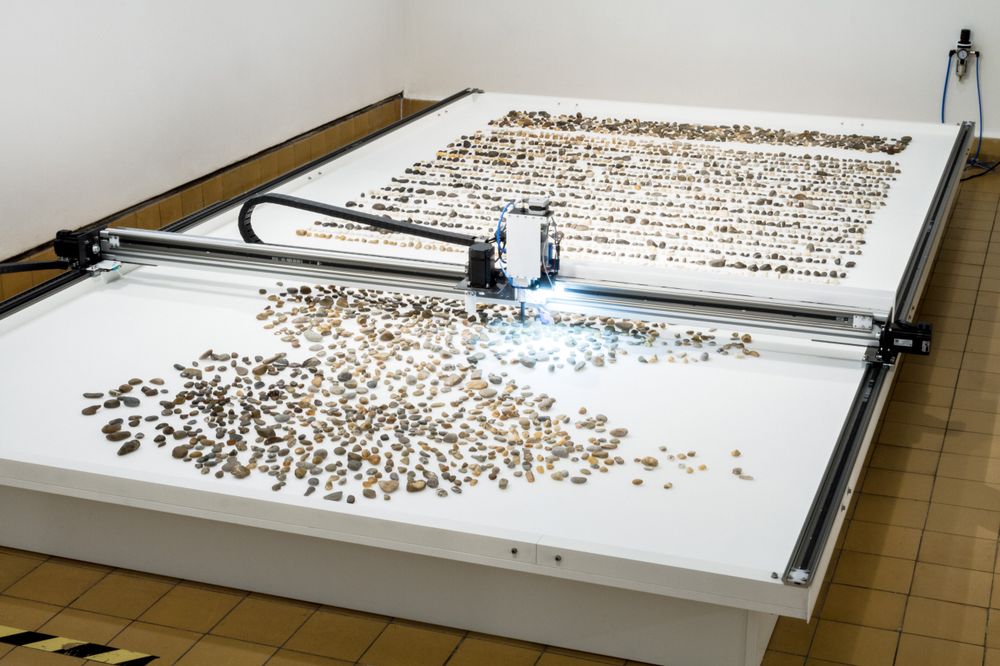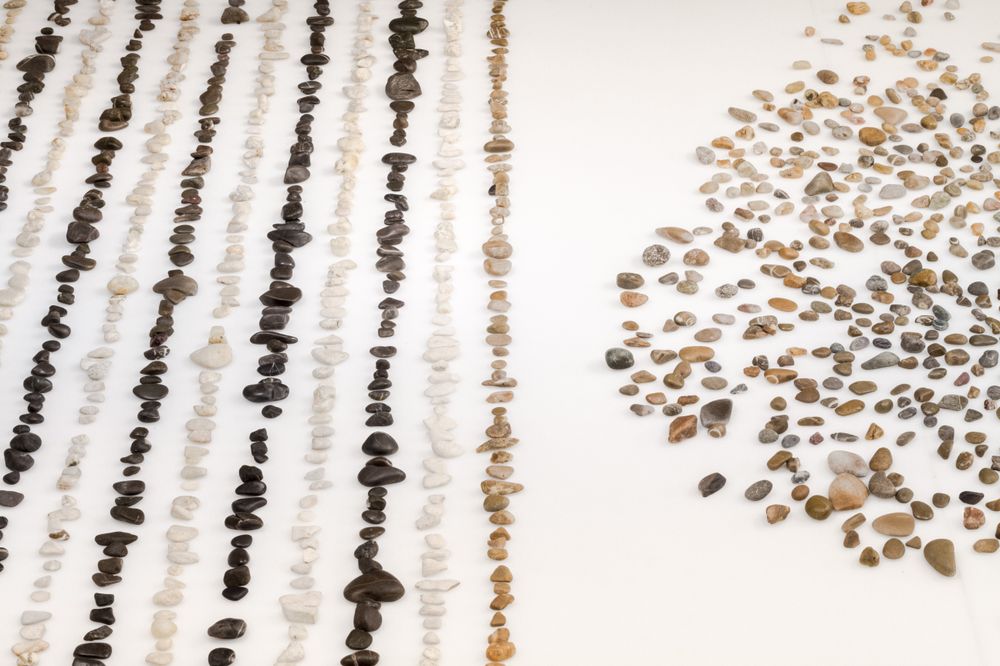報告者:孫佳興
報告PPT :書報討論Jller
作品名稱:Jller (2018) ok
作品作者:German artist Benjamin Maus and Czech artist Prokop Bartoníček.
作品來源:作品連接(1)、(2) 、(3)
作品說明:
 *Jller* is part of an ongoing research project in the fields of industrial automation and historical geology. It is an apparatus that sorts pebbles from a specific river by their geologic age. The stones were taken from the stream bed of the German river Jller, shortly before it merges with the Danube, close to the city of Ulm. The machine and its performance is the first manifestation of this research.
*Jller* is part of an ongoing research project in the fields of industrial automation and historical geology. It is an apparatus that sorts pebbles from a specific river by their geologic age. The stones were taken from the stream bed of the German river Jller, shortly before it merges with the Danube, close to the city of Ulm. The machine and its performance is the first manifestation of this research.
A set of pebbles from the Jller are placed on the 2×4 meter platform of the machine, which automatically analyzes the stones in order to then sort them. The sorting process takes place in two steps: Intermediate, pre-sorted patterns are formed first, to make space for the final, ordered alignment of stones, defined by type and age. Starting from an arbitrary set of stones, this process renders the inherent history of the river visible.
The history, origin and path from each stone found in a river is specific to the location, as every river has a different composition of rock types. The origin of those stones is well documented. For instance, the ones from the river Jller derive from two origins. Some come from rocks, that are the result of erosions in the Alps and are carried in from smaller rivers. Other stones have been ground and transported by glaciers that either still exist, or existed in the ice ages. As the Alps and flats, which were once covered by glaciers, have shifted, even deeper rock-layers were moved and as a result, stones from many geologic periods make their way into a river.
When the history of a river is known, the type of stone can be directly related to its geological age. One very common sedimentary rock is the dark grey limestone from the Triassic period (225 million years ago). It was formed from the layers of sediments in the primeval ocean. Granodiorite, on the other hand, is an igneous rock of volcanic origin from the Tertiary Period (30 to 40 million years ago). Between those types there is a variety of metamorphic rocks, created by the transformation of existing rock types through the influence of temperature and pressure over time. Furthermore, a small amount of pebbles are formed by non-rock materials like red brick or slag, which have their origin in the Anthropocene.
Most of the time, stones do not appear as a singular uniform material, but as a composition of different, laminated or layered materials. A prominent example of this are the white lines of lime in grey pebbles.
**Technology:** The machine works with a computer vision system that processes the images of the stones and maps each of their locations on the platform throughout the ordering process. The information extracted from each stone are dominant color, color composition, and histograms of structural features such as lines, layers, patterns, grain, and surface texture. This data is used to assign the stones into predefined categories. Those categories represent the range of stones that can be found in the specific river and correspond directly to the age of the stone. They are the result of a classification system that is trained by sets of manually selected and labeled stones. Because there are only a limited number of stone types that can be found in a specific river, this system proves to be very accurate. The stones get picked up by an industrial vacuum gripper, which can rotate around its own axis. This way the pebbles can also be aligned.
Jller was presented as part of *Ignorance*, a collaborative exhibition by German artist Benjamin Maus and Czech artist Prokop Bartoníček.
